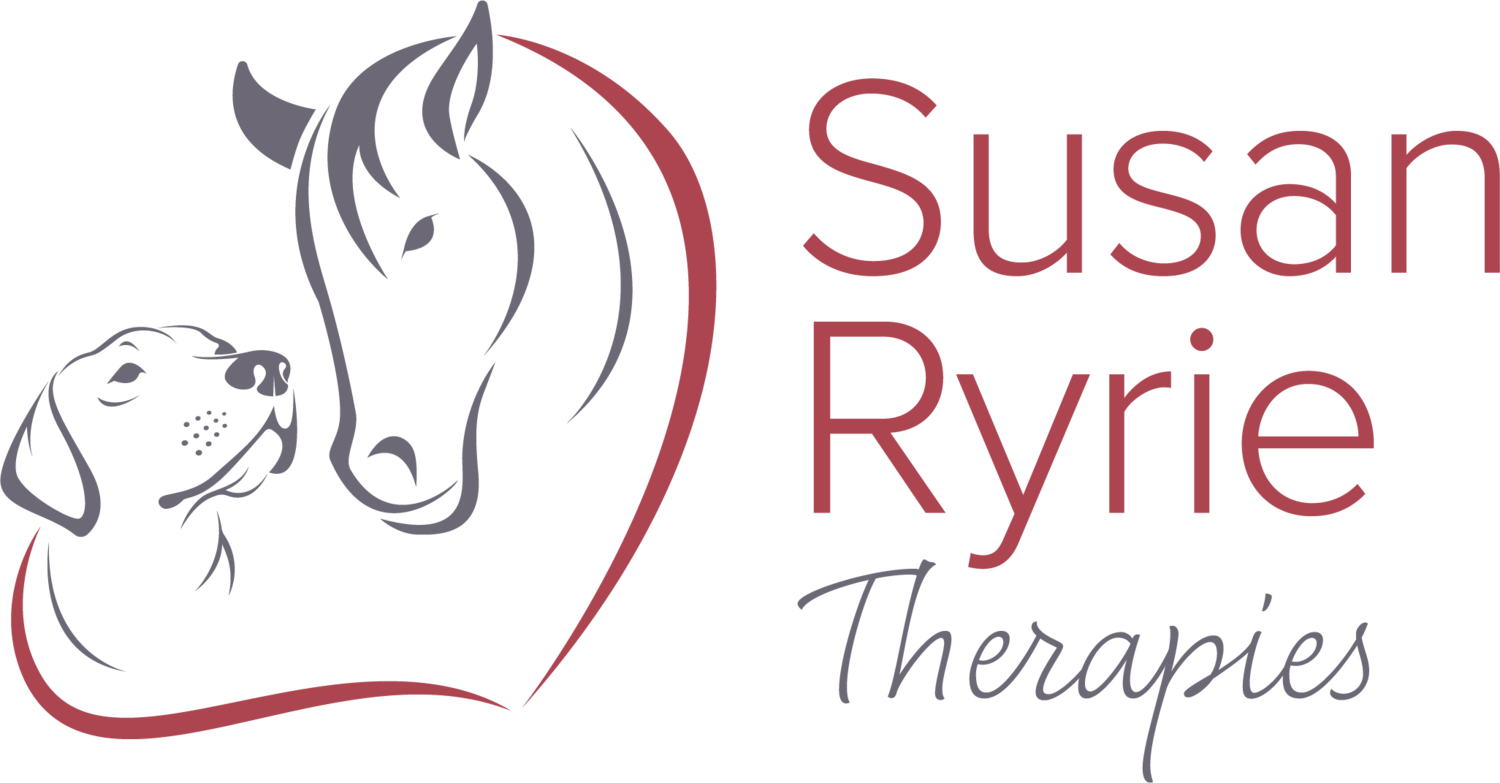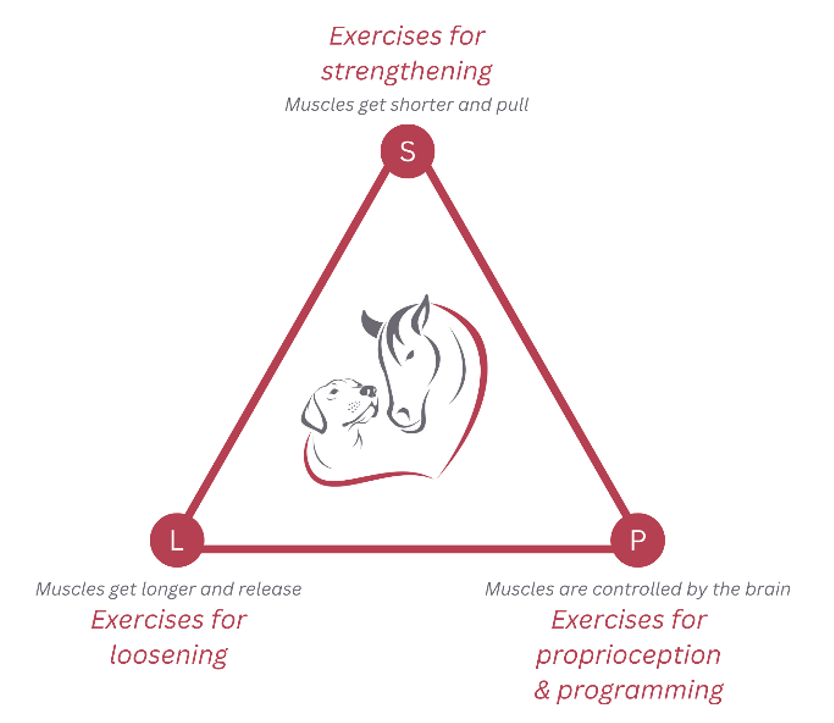
Top Tips for Prehab
A haphazard approach to exercise is going to be a bit like a lottery.
You might win - or you might lose.
To be effective with prehab you need some sort of plan, even if it’s only in your head … and that plan needs to be based on good principles.
Top Tip No (1)
Use the carrot stretches regularly.
The correct name for these exercises is Dynamic Mobilisation Exercises (DMEs).
Research studies have looked into the effect of these exercises, and found they are an excellent way to strengthen the multifidus muscle. This is a core muscle that supports the spine - it sort of laces together adjacent vertebrae.
Research studies in humans have also found that an episode of even very mild back pain can lead to the multifidus ‘shutting down’ at some points. Now, we might expect that when the pain has gone everything goes back to normal, but this doesn’t seem to be the case. It needs targeted exercise to wake this muscle up again.
It seems likely that the same is true for horses and dogs. Since the work of a ridden horse makes it a high risk for developing back pain, and since it could be easy to miss the signs of very mild pain in an animal, it is good practice to use exercises that target the multifidus muscle on a regular basis. This is the reason for making DMEs (carrot stretches) a regular part of your care routine for your horse - or even for your dog.
Top Tip No (2)
Spend some time revisiting the basics.
The picture shows what happens if your foundations are not strong enough!
The movements that are easiest for your horse are vitally important because they build the foundations for more difficult work. If these foundations are not well developed, your horse may resort to compensating when attempting the difficult movements.
Compensation is the start of a slippery slope that for some leads to lameness and other injuries. It is the root cause of many problems that affect our horses and ourselves. It will accumulate over time.
Continually and actively reinforcing good habits of movement at all levels is one of our best safeguards against the negative effects of compensation.
Don't always work on the more difficult things that your horse does for you. Devote a proportion of your time to reinforcing the foundations by making the basics better.
Top Tip No (3)
Think about posture.
Poor posture shows where there are weaknesses especially in the muscles that stabilise the joints.
Think of it this way for simplicity.
There are 2 types of muscle. Postural muscle supports and stabilises joints, keeping the 'ends of the bones' correctly lined up. Locomotor muscle moves the bones around, changing the angle at the joint.
When you see poor posture, the bones are not all properly lined up. The joints are not getting adequate support even in the easiest situation when forces inside the body are at their lowest.
Add in movement and you increases the forces inside the body. Try to picture what might be happening to the joints now... I find it a very sobering thought.
So posture gives you an idea of how strongly the joints are supported, and how much 'wear' they might be experiencing with movement.
Time spent on the slower, even static, exercises that improve posture is a great investment. We're talking here about carrot stretches, in hand walking over ground poles, rocking exercises for the horses. And somatic movement exercises are great for people.
Top Tip No (4)
Plan for Rest and Repair.
Rest is not just time to chill out. Important processes are happening within the body. They might not be visible, but their effects become very noticeable over time.
The effects I am referring to are the body's repair processes.
Think carefully for a moment about what might be happening inside the body to trigger a response to strengthen muscles.
We know that muscles get stronger as we increase the amount of work they do. But what is the tipping point between a muscle being 'strong enough' and 'needing to be stronger'?
The answer is very simple. A muscle needs to be stronger if it has become damaged by the amount of work it has been required to do. Yes, if you are working to strengthen muscles (yours, your horse's or your dog's) then you are causing damage to the muscles.
I find that a very sobering thought.
The trick is to stop exercising before you go beyond the 'micro-damage' state - just enough to trigger a strengthening response. Then, to allow enough time for the 'repair and upgrade' process.
Rest is vitally important. Strengthening happens as a result of exercise, but it actually takes place during rest.
Top Tip No (5)
Think in terms of ‘3’!
To make improvements in muscular health, it isn't enough to just go for strength. You also need to make improvements in what the muscles are actually doing.
I keep my 'exercise triangle' in mind. It will help you with the basics you need at this level.
Posture and movement are created by muscles pulling on bones:
:- Muscles get shorter to pull.
:- Muscles release and get longer to get back to the start.
:- Muscles are controlled by the brain.
You need exercises to help all three parts of the process, not just the strengthening.
If you use a mixture of exercises that create a good balance between these three principles you will make meaningful progress. This means working at every corner of the triangle
How do you know which corner of the triangle any given exercise will help?
If it's hard physical work it will be strengthening. (top corner).
If it's relaxing it will be releasing (bottom left corner).
If it needs concentration it will be working on the brain (bottom right corner).
Of course there's a lot more you could think about, but this is a good starting point.
(1) Write down the exercises you might do with your horse.
(2) Label them according to which corner they mostly address.
[I use S for Strengthening (carrot stretches are the most important basic strengthening exercise) L for Loosening (eg a free walk, perhaps in hand, with a low head carriage) P for Proprioception and Programming (ground poles help proprioception and good regular stride (programming)].
(3) Each day, use exercises from just one or two corners.
(4) Aim to have a balance over one week - including rest days. The maths works out beautifully to give 3s again! So, I might use S exercises 3 times a week, L exercises 3 times per week and P exercises 3 times per week.
3 types of exercise; use each type 3 times per week.





